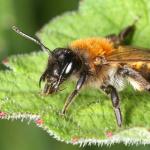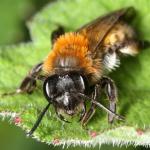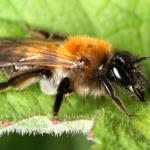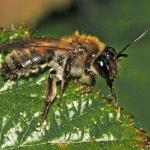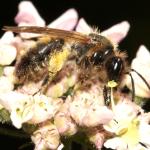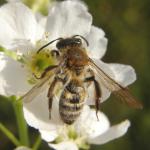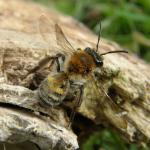Andrena ambigua_homonym Perkins, 1895
This large Andrena is one of a group of three (A. fucata Smith, A. helvola (Linnaeus) and A.synadelpha) which are quite similar in appearance, phenology and habitat preferences (all found most often associated with clearings in deciduous woodland during May and June). The males are often seen visiting the flowers of wood spurge, the females at those of hawthorn and field maple. Females of all these species have gasters which sport bands of brown pubescence, differing mostly in the density of the hairs.
Found throughout England and Wales, although predominately southern and always local in occurrence. There is one Scottish record and the species should be sought elsewhere in that country.
Distributed in western Europe from Spain to Poland and Denmark, but absent from Fennoscandia, Italy and the Balkan region.
This species is not regarded as being scarce or threatened.
Most often found in deciduous woodland on a variety of soil types.
April to June.
It is reported as nesting in large aggregations in Germany (Westrich, 1989), but these have not been reported within the range of this Atlas.
A wide variety of flowers are visited, perhaps more often the following: field maple, hawthorn, wood spurge and holly.
Nomada ruficornis (Linnaeus) has been recorded as a parasite. Stylops nevinsoni Perkins is also recorded as being found on it (Perkins, 1918).
2012


